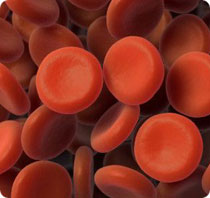

Knowledge Centre - Platelet Facts
Blood is made up of the following components:
- Red Blood Cells
- White Blood Cells
- Platelets
- Plasma
Platelets play the important role of formation of a clot whenever there is a rupture of a blood vessel. The clot seals the blood vessel and prevents any further loss of life-saving blood.
The normal Platelet Count in a human being is 1,50,000 to 4,00,000 per cubic millimeter. When the Platelet Count in the blood goes down drastically, there will be a tendency to bleed. In such an event, a person may require transfusion of Platelets.
Platelet Counts can go down in the case of persons:
- who have undergone bone marrow transplant.
- who have undergone organ transplants.
- who have undergone chemotherapy.
- who have undergone heart surgeries.
- who are suffering from malaria, dengue, leptospirosis.
- who are suffering from bleeding disorders.
Platelets are obtained by two methods:
- From Whole Blood that is collected during blood donation
When a person donates blood, the blood that is collected is called ‘Whole Blood’. This blood is taken to the Blood Bank and separated into its components. One of the components that is obtained is Platelets. - By collecting only Platelets by ‘Aphaeresis'.
By collecting only Platelets from a person through a process called ‘Apheresis’. The remaining components are sent back to the donor’s body.
Need
Blood
Blood
Need
Platelets
Platelets
Need to organize
Blood Drive
Blood Drive
Need to get tested for
Thal Minor
Thal Minor
Need to organize
Thal Minor Screening Drive
Thal Minor Screening Drive
Want to be a
Platelet Donor
Platelet Donor
Want to
Donate Blood
Donate Blood
